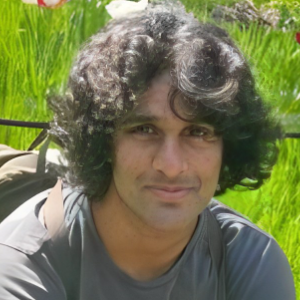Title : Corneal tissue engineering at a glance
Abstract:
Tissue engineering and regenerative medicine (TERM) has been growing rapidly and is a promising approach to address the limitations of traditional corneal transplantation and revolutionise corneal therapy. This poster provides an overview of what corneal tissue comprises of and what the current strategies and future advancements of corneal TERM are.The cornea, with its vital role in maintaining visual acuity, is susceptible to various diseases and injuries, leading to significant visual impairment and blindness. Traditional corneal transplantation faces challenges such as donor scarcity, graft rejection, and post-surgical complications, prompting the need for innovative alternatives. Corneal tissue engineering involves the fabrication of biomimetic scaffolds that mimic the native corneal extracellular matrix, providing a conducive microenvironment for cell adhesion, proliferation, and differentiation. Incorporation of bioactive factors and growth factors within the scaffolds stimulates cell migration and tissue regeneration. Cell sources for tissue engineering range from autologous and allogeneic primary corneal cells to induced pluripotent stem cells (iPSCs) and mesenchymal stem cells (MSCs). Acellular corneal matrices and decellularization techniques preserve the native structure and bioactive components of the cornea while eliminating immune response-related risks. These methods offer reduced immunogenicity and improved integration with the host tissue. Advancements in 3D bioprinting technologies enable the precise fabrication of corneal tissue constructs with controlled microarchitecture and mechanical properties. This technology shows promise for producing patient-specific corneal implants, mitigating graft rejection risks, and eliminating the need for donor tissues. In conclusion, corneal tissue engineering and regenerative medicine hold significant potential in transforming corneal therapy. They offer novel and promising strategies for treating corneal diseases and injuries. Nonetheless, extensive preclinical and clinical studies are essential to validate the safety, efficacy, and long-term outcomes before widespread clinical implementation can be realized. Continued research and collaboration between scientists, clinicians, and industry stakeholders are crucial to fully harness the potential of these innovative technologies in improving visual outcomes for patients with corneal disorders.
Audience Take Away:
- We will discuss corneal tissue engineering using the 3 pillars.
- The first of the pillars is cells, this is all of the different types of cells to be comprised in corneal tissue.
- The second pillar is scaffolds, these are what hold the cells together and allows for different types of signaling pathways to occur in a mechanical manner.
- The last pillar is signaling, these are the different ways the cells and scaffolds are able to communicate to one another through signals as well as how external signals such as from their environment influences them.
- We will also discuss how these 3 pillars are being integrated in current research to establish innovative and amazing opportunities to advance corneal regeneration.



